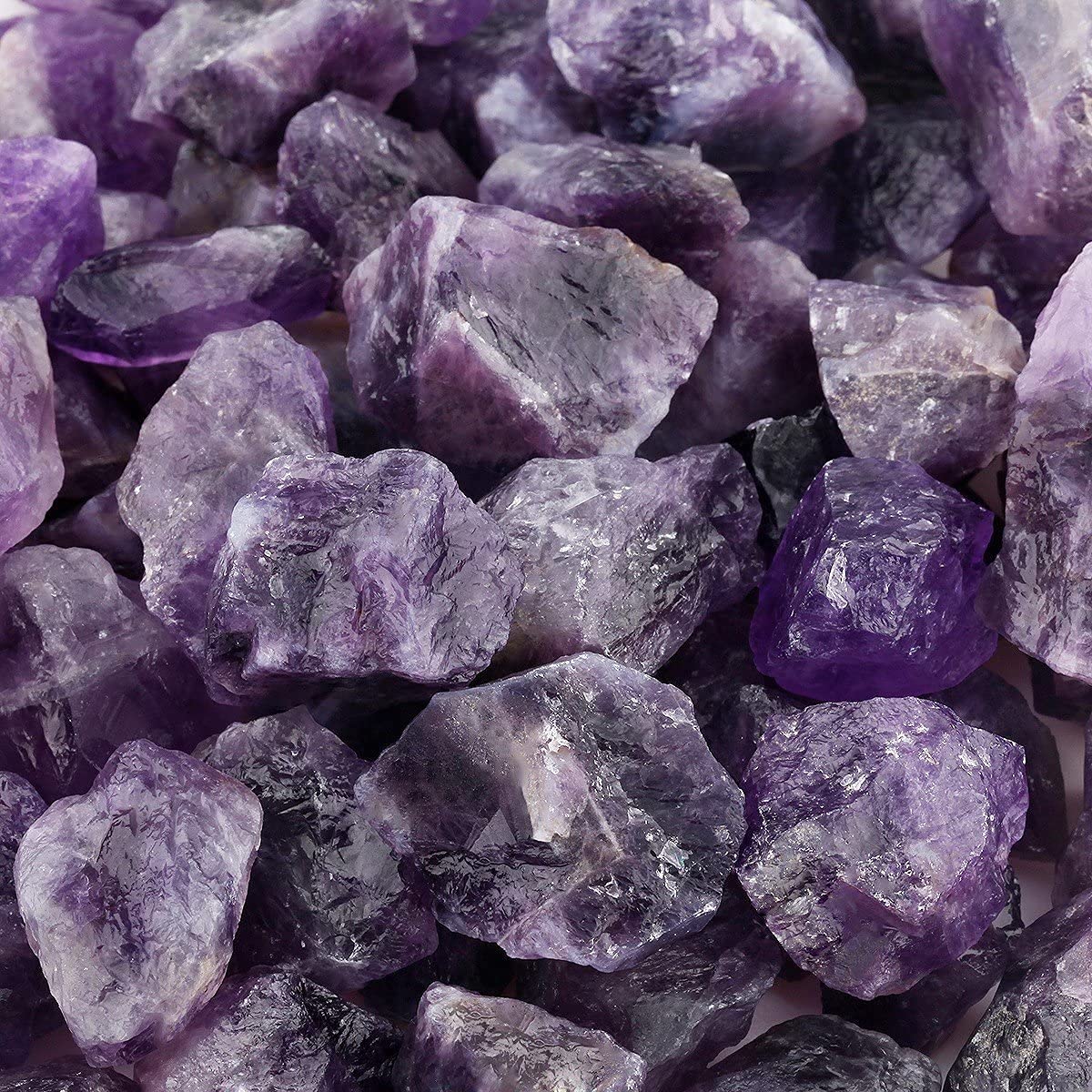Rich colors and mysterious connotations of purple gemstones have captivated both spiritual seekers and collectors for ages. Among these, Amethyst is one of the most often used and well-known stones since its deep violet hue and relaxing effect appeal. Other purple stones, such Lepidolite, Charoite, and Sugilite, nevertheless also have special looks and metaphysical qualities. Knowing the variations among these crystals helps you to select the one that best fits your situation. Every purple stone provides something unique—but Amethyst is always a classic for healing, meditation, or beauty.
Look and Colour
Usually transparent, amethyst crystals have light lavender to deep royal purple colors. Its inherent shine and purity really draw attention. Because of its high lithium concentration, Lepidolite frequently exhibits a soft, violet tone with a shimmering, flaky texture. Known for its whirling patterns of purple, black, and white, charoite has a marbled, fibrous appearance. Conversely, Sugilite has a rich magenta or dark plum color and is opaque. Although their visual textures and saturation levels make them readily different from one another, all fall on the purple spectrum.
Metaphysical characteristics

Usually connected with spiritual awareness, mental clarity, and emotional equilibrium is amethyst. It is sometimes used to improve intuition and offer defense during meditation. Often used for stress and anxiety reduction, lepidolite is known for its relaxing, mood-stabilizing qualities. With transforming power, charoite helps one to overcome anxiety and develop inner strength. Particularly in the face of trauma or difficulty, sugar is thought to help emotional recovery and healing. Every stone has a particular emotional or spiritual purpose, thus depending on your personal objectives your decision becomes more important.
Availability and Cost
Relatively plentiful, amethyst is found in numerous countries including Brazil, Uruguay, and some areas of Africa. Its availability helps it to be more reasonably priced than other of the rarer purple rocks. Though high-quality chunks with vivid color can be more expensive, lepidolite is also rather accessible to get. More rare and found in limited areas like Russia and South Africa respectively, Charoite and Sugilite can be far more expensive. Availability of purple stones often influences pricing and quality whilst purchasing for them.
Although all purple gemstones have a same color family, their appearances, energies, and uses set them apart. Every stone gives your collection a different layer of meaning from the protective quiet of Lepidolite to the transforming force of Charoite and the emotional healing of Sugilite. Still, Amethyst is the most loved among purple gemstones for its classic beauty, accessibility, and flexible uses.











